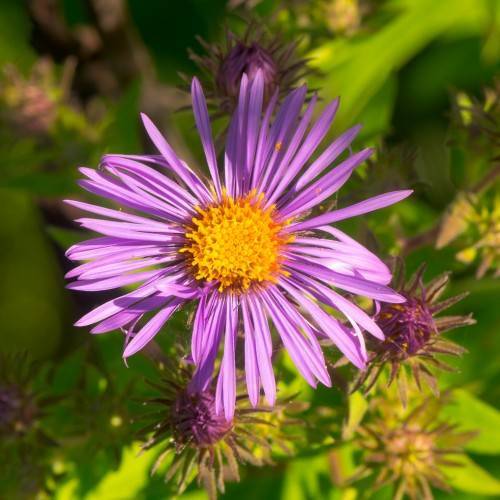
New England aster
Symphyotrichum novae-angliae 'Purple Pixie'
Cycle:
Herbaceous Perennial
Watering:
Average
Hardiness Zone:
4 - 8
Flowers:
Flowers In Autumn
Sun:
Full sun
Leaf:
Yes
Growth Rate:
Low
Maintenance:
Low
Drought Tolerant:
Yes
Salt Tolerant:
Yes
watering
New England aster should be watered once every 7-10 days. A good rule of thumb for watering is to wait until the top inch of soil is dry to the touch before adding moisture. It is important not to overwater this plant as too much water can cause root rot. The New England aster prefers moist, but not soggy soil, so water deeply until excess begins to drip through the drainage holes in the pot. Be sure to empty any accumulated water in the plant's saucer once the plant has had time to drink. Finally, the New England aster should be monitored often to determine the exact watering schedule that works best for your particular environment.
sunlight
New England aster (Symphyotrichum novae-angliae 'Purple Pixie') typically prefers full sun, at least 6 hours per day. Exposing plants to 8 to 12 hours of direct sun provides the best flowering and growth. However, plants will still grow in partial shade, but they will need more water and will flower less. Avoid shade during the hottest part of the day (noon to 2 pm).
pruning
For New England aster (Symphyotrichum novae-angliae 'Purple Pixie'), pruning should be done in the springtime. Pruning should be done by cutting back any dead flowers and flower stems and removing any crossed or diseased branches. Pruning should also be done to keep the plant from becoming too large. Pruning should be done such that roughly 2-thirds of the stems are removed or pruned off, leaving only a few branches in order to reduce the plant's size and maintain its shape. Pruning should also be done to encourage new and healthy stems and flowers. Regular and timely maintenance is important for healthy growth of this plant species.
